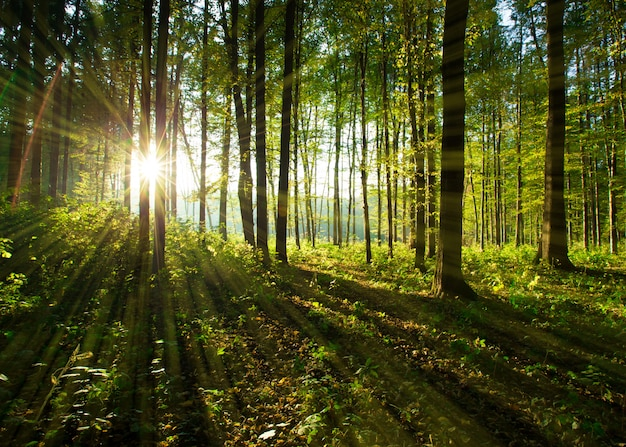An understanding of forest biodiversity

The variety of plant and animal species that can be found in a specific area is known as biodiversity. The more healthy, native species that may be found in an environment, both in terms of abundance and variety, the better. A healthy forest offers a variety of species with food, shelter, clean air, and water.
Biodiversity in a forest includes everything from worms and bugs that live underground to land animals that forage on the ground to squirrels and birds that live in the treetops. "Fauna" is the scientific name for these species. The scientific term "flora," which refers to different plant species, is also a part of biodiversity. This includes the trees themselves as well as other plant species found in the forest.
Sustainable forestry and organic farming both make an effort to use natural resources as little as possible to harm the environment. Impact on the environment extends beyond merely modifying the land to be used for farming or to remove lumber and other commodities from the region. Whether the alteration has a beneficial or bad impact on the land and nearby surroundings, it must be made in order to farm land or harvest wood.
The biodiversity of the places utilized is also attempted to be maintained through organic farming and sustainable forestry practices. The goal is to maintain the viability of all local plants, animals, insects, and other living things.
Organic agriculture
Natural remedies rather than potentially harmful pesticides, herbicides, and other chemicals are used in organic farming. Additionally, organic farming includes:
For livestock, no additional antibiotics
A history of using organic methods to guarantee that there are no dangerous chemicals in the soil
There are no Transgenic organisms.
Compared to traditional farming, organic farming aims to be more environmentally friendly. Farmers strive to leave the least amount of environmental footprint possible. For instance, potent chemical pesticides have the capacity to modify the soil and contaminate the sources of food for nearby organisms, as well as to enter the water supply. These compounds have the ability to disperse widely if they enter a water source.
In order to give the soil enough time to recover from the previous crop, farms that follow organic farming principles rotate their crops and planting dates. This preserves the soil's fertility while also having a considerably lower negative environmental impact than planting the same crop repeatedly would.
Regenerative Forestry
Environmental scientists are continually learning about new detrimental consequences that traditional logging and other forestry operations have on the nearby forest ecosystems. It is difficult for a forest to remain intact after fully eradicating a portion of it without having an impact on the rest of the forest.
Animals residing in the eliminated region, for instance, must relocate to other parts of the forest, intruding onto the natural habitat.
The goal of sustainable forestry is to reduce the negative effects of forestry activities through a variety of methods, including:
The removal of trees is done in a way that leaves some trees in the area.
Debris from trees is permitted to provide beneficial nutrients to the soil.
Replanting is methodical and intended to promote regrowth.
A more expensive technique of getting wood, paper, and other tree products is frequently sustainable forestry. However, the advantages exceed the drawbacks. The chances of future tree growth in the area are boosted, local species are given the chance to thrive, and forests are let to develop.
Make purchases
Look for labels on the products that distinguish them as organic or arising from sustainable forestry if you wish to buy products from organic farming or sustainable forestry.
On a more general perspective,
It is impossible to overstate the value of forests.
Our ability to survive depends on forests, from the oxygen we breathe to the wood we use. Forests offer more than just habitat for animals and means of subsistence for people. They also protect watersheds, stop soil erosion, and lessen the effects of climate change. However, despite our reliance on trees, we continue to let them perish.
Forests serve as habitats that support human life and biodiversity.

Beyond our limited human perspective, not to mention our metropolitan perspective, forests serve as habitat for a wide variety of animal species. They are the habitat for more than half of the planet's terrestrial biodiversity and provide a means of subsistence for numerous human settlements, including 60 million indigenous people.
Forests are essential to over 2 billion people.
We can depend on forests for shelter, work, water, food, and fuel security. All of these activities include forests in one way or another. Fruits, paper made from trees, wood from trees, and other examples are simple to understand. Others are less noticeable, such by-products used in commonplace goods like medications, cosmetics, and detergents.
The greatest carbon storage areas on the planet are forests, followed by oceans.
They offer essential ecosystem services for promoting human welfare.
These consist of:
Assimilation of the dangerous greenhouse gases that cause climate change. One quarter of a trillion tons of carbon are stored in above- and below-ground biomass in tropical forests alone.
Providing clean water for domestic uses, such as bathing and drinking
Preserving watersheds and limiting or slowed-down chemical and erosive flow into rivers
Having food and medicine available
Acting as a bulwark against natural calamities like floods and downpours
Housing land-based species in the planet.
